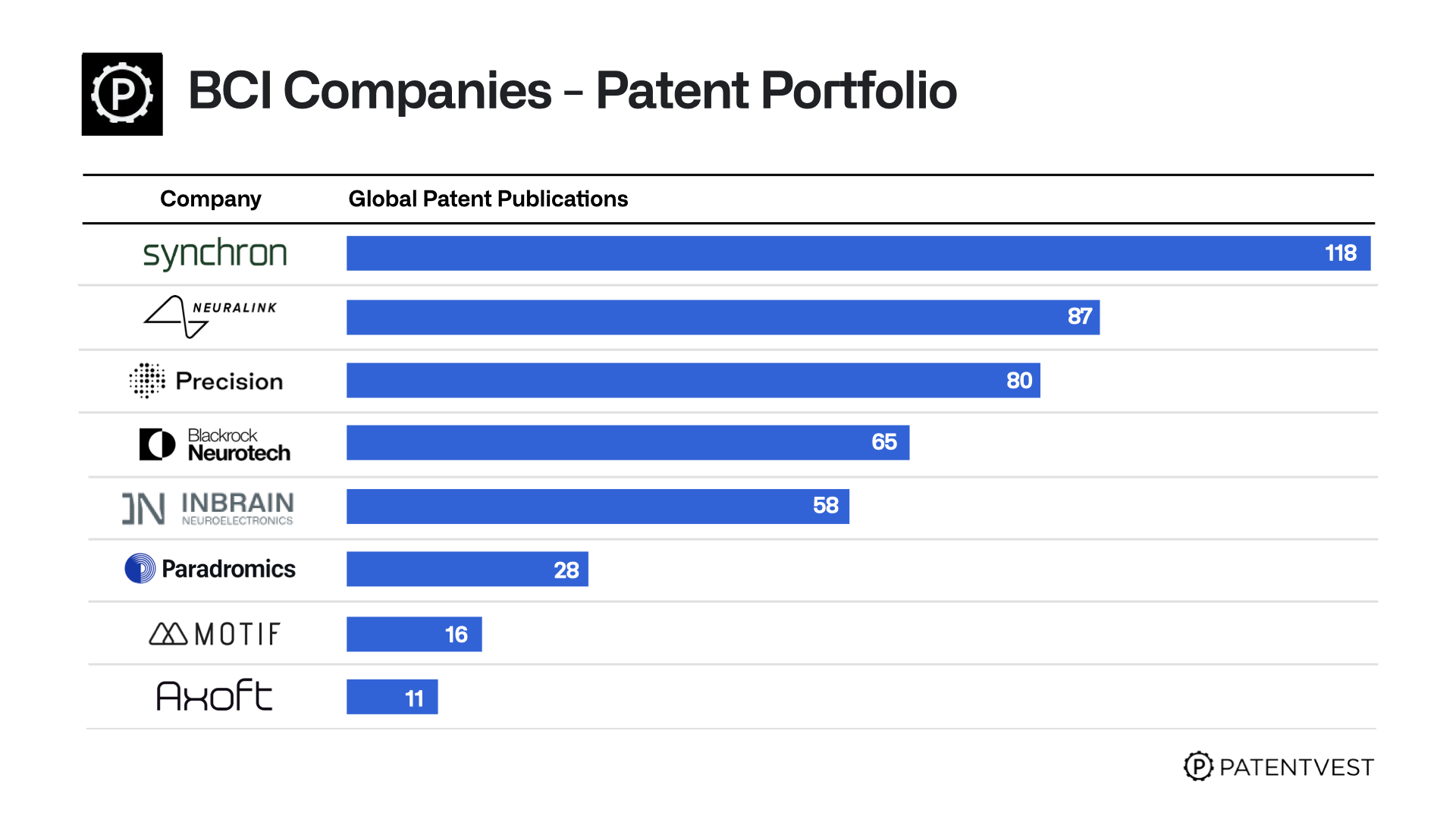PATENTVEST PULSE
Brain Computer Interfaces
Who’s Leading, What They Own, and How IP Will Decide the Future
April 1, 2025

Neurological disorders represent one of the fastest-growing and highest-need areas in global healthcare, with millions affected by conditions such as paralysis, epilepsy, stroke, and treatment-resistant depression.
As traditional treatments struggle to deliver meaningful outcomes, BCIs are emerging as a next-generation solution—restoring lost function, enabling new capabilities, and shifting neurological care from reactive to proactive.
The U.S. market for BCIs is projected to exceed $400 billion. Approximately $80 billion is concentrated in high-acuity, early-adopting patient populations already aligning with clinical and reimbursement pathways. A further $320 billion in long-term potential lies in broader neurological and psychiatric conditions, where early alignment of intellectual property, clinical validation, and commercialization strategy will be critical to scaling. While the opportunity is vast, long-term value will accrue to the companies that move early to secure technical, clinical, and IP leadership.
Key Insights
- While Neuralink commands visibility, Synchron is quietly establishing category leadership through a minimally invasive platform, global partnerships, and a highly targeted IP strategy spanning 10 jurisdictions. Other leaders—including INBRAIN, Blackrock, Precision Neuroscience, and Paradromics—are staking out defensible positions through differentiated technologies, clinical focus areas, and early IP consolidation.
- More than 2,160 unique BCI patent families are now held by companies like NeuroPace, Neurolutions, Cognixion, Neurable, Snap (NextMind), Panasonic, Arctop, and CereGate—highlighting an accelerating arms race for control over system-level intellectual property.
- Academic institutions such as Tianjin University, Stanford, and the University of California continue to dominate early-stage innovation, holding foundational patents in neural signal processing, interface architecture, and adaptive systems—establishing the starting line for many of today’s commercial efforts.